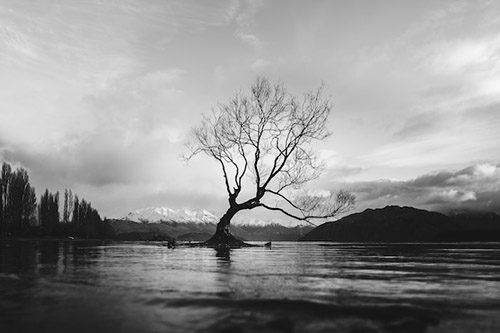Monochrome photography has a prominent place in the history of photography. This style of photography basically means to have images with just the variations of a single color. While black and white photography is obviously the most popular form of monochrome photos and can be seen in the works of Bruce Weber Photographer and other popular artists, images with sepia or cyanotype effects are also admired by many.
Proper planning is vital for any photo shoot, including when the photographer aims at capturing monochrome images. If they plan for a golden hour shoot, then it is important to at least have a run idea about when the sun is going to set, which parts of the environment or subject shall be illuminated by light, which parts shall be in the shadow, and so on. Photographers need to be careful about where to place their subjects. While planning the scene, one must make sure that the composition works well without colors. Without prior planning, the frame may seem too messy or too clean during the shoot.
Shooting in RAW is recommended for photographers wanting to take monochrome images. By shooting in the RAW format, one can easily be able to work more on the file later in the post-production stage, while reducing the risk of artifacts and maintaining image quality. The RAW format manages to store a lot more information and details in comparison to JPEG, as the latter is an already processed file format.
Long exposures can be great for monochromatic shots as it can introduce a dynamic atmosphere to the image by adding movement. To create striking monochrome images, photographers should try to play with their exposure times a bit for the visual impact that goes beyond just pretty hues. They should try to use whatever is moving in the frame to their advantage, including people, vegetation, clouds, water and so on.
Even though colors can definitely help an image pop to capture maximum attention, a good monochrome shot would require a strong composition that puts emphasis on intriguing patterns, like strong textures and leading lines. When taking monochrome shots, photographers should stretch the histogram in a clever manner. At times, even keeping the shadows really dark or clipping a bit of the highlight can prove to be pretty effective. Giving a good amount of contrast to the image helps put more focus on the shapes and lines in the frames.
In case of color photos, one must try taking multiple exposures or use the high dynamic range (HDR) technique to keep the exposure well-balanced, and have its details effectively visible. On the other hand, shooting silhouettes will be a great idea for monochrome images. Going through the works of Bruce Weber Photographer can help people gain further inspiration on how exactly to capture stunning monochrome shots. Weber seldom does color photography, and most of his works are monochrome.
